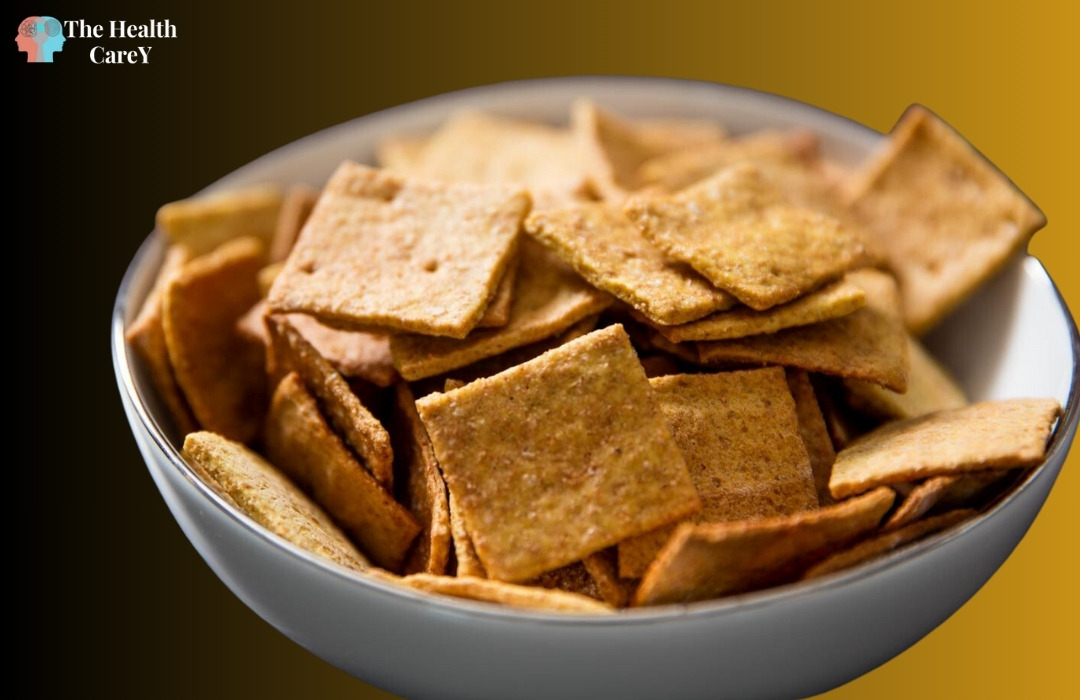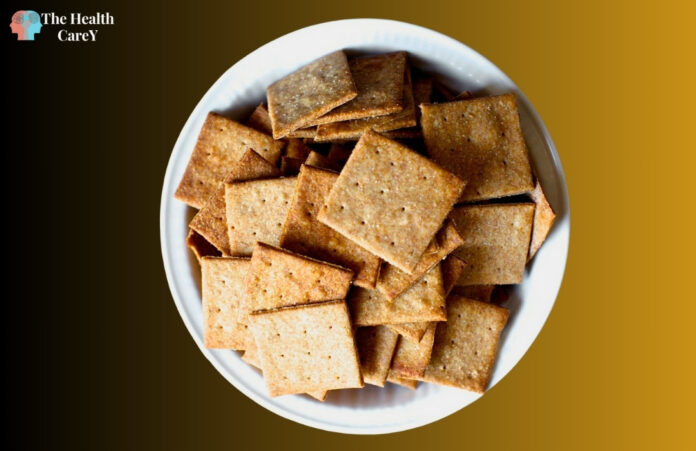Are Wheat Thins Healthy for You? Wheat Thins are a popular snack that many people enjoy. They are marketed as a healthier alternative to other snack options, but are they actually good for you? In this article, we will explore the nutritional profile of Wheat Thins, their potential health benefits and risks, and answer the question: Are Wheat Thins healthy for you?
Wheat Thins are made from whole grain wheat flour and contain no artificial flavors or colors. They are also low in saturated fat and cholesterol-free. However, they do contain added sugars and salt. One serving of Wheat Thins (16 crackers) contains 140 calories, 5 grams of fat, 22 grams of carbohydrates, and 2 grams of protein.
Key Takeaways
- Wheat Thins are made from whole grain wheat flour and contain no artificial flavors or colors.
- Wheat Thins are low in saturated fat and cholesterol-free.
- Wheat Thins contain added sugars and salt.
Are Wheat Thins Good for You?
Wheat Thins are a popular snack that many people enjoy. They are marketed as a healthier alternative to other snack options, but are they really good for you? Let’s take a closer look.
Nutritional Information
One serving of Wheat Thins (16 crackers) contains 140 calories, 5 grams of fat, 22 grams of carbohydrates, and 2 grams of protein. They are also a good source of whole grains, with 21 grams of whole grains per serving.
Wheat Thins are also low in sugar, with only 1 gram of sugar per serving. However, they are relatively high in sodium, with 230 milligrams per serving.
Health Benefits
Wheat Thins are made with whole grains, which provide fiber and other important nutrients. Eating whole grains has been linked to a reduced risk of heart disease, diabetes, and certain cancers.
Additionally, Wheat Thins are a convenient snack option that can be easily packed for on-the-go snacking. They are also a better option than many other snack foods, such as chips or candy, which are often high in fat, sugar, and calories.
Considerations
While Wheat Thins can be a healthy snack option, it is important to keep portion sizes in mind. Eating too many Wheat Thins can quickly add up in calories and sodium.
It is also important to note that Wheat Thins are a processed food and may contain additives and preservatives. If you are looking for a healthier snack option, whole, unprocessed foods such as fruits, vegetables, and nuts may be a better choice.
Overall, Wheat Thins can be a good snack option when consumed in moderation as part of a balanced diet.
Are Wheat Thins Bad for You?
If you’re a fan of Wheat Thins, you may wonder if they’re a healthy snack option. While they do have some nutritional benefits, there are also some downsides to consider.
High in Sodium
One potential downside to Wheat Thins is their high sodium content. A serving of Wheat Thins (16 crackers) contains 230 milligrams of sodium. If you eat multiple servings, this can quickly add up and contribute to high blood pressure and other health issues.
Processed Ingredients
Wheat Thins are made with processed ingredients, including enriched flour and sugar. While these ingredients are common in many packaged foods, they don’t offer the same nutritional benefits as whole foods.
Lack of Fiber
Another potential issue with Wheat Thins is their lack of fiber. A serving of Wheat Thins contains just 1 gram of fiber, which is not enough to support good digestion and overall health.
While Wheat Thins can be a tasty snack, they’re not the healthiest option out there. If you’re looking for a healthier snack, consider options like fresh fruits and vegetables, nuts, or whole-grain crackers with no added sugars.
Are Wheat Thins Good for Diabetics?
If you have diabetes, you may be wondering if Wheat Thins are a good snack option for you. Wheat Thins are a type of cracker made with whole grain wheat, which can provide some nutritional benefits. However, it’s important to consider the overall nutrient content and how it may affect your blood sugar levels.
One serving of Wheat Thins (16 crackers) contains 140 calories, 21 grams of carbohydrates, and 3 grams of fiber. The fiber content can help slow down the absorption of carbohydrates and prevent spikes in blood sugar levels. However, it’s still important to monitor your portion sizes and overall carbohydrate intake.
If you’re looking for a snack that will provide more sustained energy and keep you feeling full for longer, you may want to consider pairing Wheat Thins with a source of protein or healthy fat. For example, you could enjoy them with a small amount of cheese or hummus, or top them with avocado or nut butter.
Overall, Wheat Thins can be a part of a healthy and balanced diet for people with diabetes, but it’s important to be mindful of portion sizes and balance them with other nutrient-dense foods. As always, it’s best to consult with a registered dietitian or healthcare provider for personalized recommendations.
Are Wheat Thins Good for Weight Loss?
If you’re trying to lose weight, you may be wondering if Wheat Thins are a good snack option. While they are marketed as a healthier alternative to potato chips and other snacks, it’s important to consider their nutritional value.
Wheat Thins are made from whole grain wheat flour, which provides fiber and complex carbohydrates. These nutrients can help you feel full and satisfied, which may prevent overeating. Additionally, Wheat Thins are relatively low in calories, with around 140 calories per serving.
However, it’s important to note that Wheat Thins also contain a significant amount of sodium, with around 230 milligrams per serving. Excess sodium intake can lead to bloating and water retention, which can make it difficult to lose weight.
When incorporating Wheat Thins into your diet for weight loss, it’s important to pay attention to portion sizes and overall calorie intake. Additionally, it may be helpful to pair Wheat Thins with a source of protein or healthy fat, such as hummus or avocado, to balance out the macronutrient profile of the snack.
Overall, Wheat Thins can be a good option for weight loss when consumed in moderation and as part of a balanced diet. However, it’s important to be mindful of their sodium content and to pair them with other nutrient-dense foods for optimal health benefits.

Do Wheat Thins Cause Cancer?
Wheat Thins are a popular snack option for many people due to their crunchy texture and savory taste. However, there have been concerns about whether consuming Wheat Thins can increase the risk of developing cancer.
The main ingredient in Wheat Thins is whole wheat flour, which is a good source of fiber, vitamins, and minerals. However, some studies have suggested that consuming foods made with refined flour, which is stripped of its nutrients during processing, may increase the risk of cancer.
Additionally, Wheat Thins contain small amounts of sugar and salt, which can be harmful if consumed in excess. High levels of sugar and salt intake have been linked to an increased risk of developing certain types of cancer, such as colorectal cancer.
However, it is important to note that there is no direct evidence linking Wheat Thins to cancer. While some of the ingredients in Wheat Thins may have the potential to increase cancer risk, the overall impact of consuming these snacks in moderation is likely to be minimal.
In conclusion, while consuming Wheat Thins in moderation is unlikely to cause cancer, it is important to maintain a balanced diet that includes a variety of nutrient-rich foods to reduce the risk of developing chronic diseases.
Are Wheat Thins Good for Fatty Liver?
Fatty liver disease is a condition that occurs when there is an excessive buildup of fat in the liver. This condition can lead to liver inflammation, scarring, and even liver failure. If you have fatty liver disease, you may be wondering if Wheat Thins are a healthy snack option for you.
Wheat Thins are a popular snack made from whole grain wheat flour and other ingredients. They are low in fat and calories, and they contain fiber and other nutrients that can be beneficial for your health. However, there are some things to keep in mind when it comes to eating Wheat Thins with fatty liver disease.
First, it’s important to note that Wheat Thins are a processed food. While they are made from whole grain wheat flour, they also contain refined ingredients like sugar and vegetable oil. These refined ingredients can contribute to inflammation in the body, which can worsen fatty liver disease.
In addition, Wheat Thins are high in carbohydrates. While carbohydrates are an important source of energy for the body, too many carbohydrates can lead to insulin resistance, which can also worsen fatty liver disease. If you have fatty liver disease, it’s important to monitor your carbohydrate intake and choose snacks that are lower in carbohydrates.
Overall, Wheat Thins can be a healthy snack option for people with fatty liver disease, but it’s important to consume them in moderation and be mindful of their refined ingredients and carbohydrate content.
Do Wheat Thins Cause Cancer?
There is no evidence to suggest that Wheat Thins cause cancer. However, like many processed foods, they do contain ingredients that may increase your risk of cancer if consumed in large quantities over a long period of time. It’s important to consume Wheat Thins and other processed foods in moderation and to focus on a balanced diet that includes plenty of whole, unprocessed foods.
Are Wheat Thins Good for Cholesterol?
If you’re looking for a snack that can help maintain healthy cholesterol levels, you may be wondering if Wheat Thins are a good option. While Wheat Thins can be a tasty and convenient snack, it’s important to understand how they may impact your cholesterol levels.
Wheat Thins are made from whole grain wheat flour, which can provide some heart-healthy benefits. Whole grains contain fiber, which can help reduce LDL cholesterol levels. However, it’s important to note that Wheat Thins also contain added oils and salt, which can have a negative impact on cholesterol levels if consumed in excess.
In terms of specific nutrients, Wheat Thins are a good source of iron and thiamin, but they are not particularly high in any nutrient that directly affects cholesterol levels.
Overall, while Wheat Thins can be a tasty snack option, they should be consumed in moderation as part of a balanced diet. If you’re looking to maintain healthy cholesterol levels, it’s important to focus on consuming a variety of whole foods that are rich in fiber and nutrients, such as fruits, vegetables, whole grains, and lean proteins.
Are Wheat Thins Good for Dogs?
As a pet owner, you may be wondering if your furry friend can enjoy Wheat Thins as a snack. While dogs can eat some human foods, it’s important to know which ones are safe and healthy for them.
Wheat Thins are a type of cracker that contains wheat flour, oil, and salt. While these ingredients are not toxic to dogs, they are not necessarily beneficial either. In fact, Wheat Thins are not specifically formulated for dogs and may contain additives and preservatives that can be harmful to their health.
Additionally, Wheat Thins are high in carbohydrates and low in protein, which is not ideal for dogs. Dogs require a diet that is high in protein and low in carbohydrates to maintain their health and energy levels.
If you want to give your dog a healthy snack, it’s best to stick to foods that are specifically formulated for dogs. Some examples of healthy dog treats include:
- Carrots
- Apples (without the seeds)
- Blueberries
- Green beans
- Plain cooked chicken or turkey
Overall, while Wheat Thins are not toxic to dogs, they are not a healthy snack option for them. Stick to dog-specific treats to ensure your furry friend is getting the nutrition they need to stay healthy and happy.
Nutritional Profile of Wheat Thins
Caloric Content
Wheat Thins are a type of snack cracker that come in a variety of flavors. One serving of Wheat Thins (around 16 crackers) contains approximately 140 calories. This makes them a relatively low-calorie snack option compared to other processed snacks.
Fat Content
Wheat Thins are relatively low in fat, with only 4.5 grams of fat per serving. This is good news for those who are watching their fat intake. However, it’s worth noting that Wheat Thins do contain some saturated fat, which should be consumed in moderation.
Sugar Levels
Wheat Thins are relatively low in sugar, with only 1 gram of sugar per serving. This is good news for those who are watching their sugar intake. However, it’s worth noting that some flavors of Wheat Thins may contain more sugar than others, so it’s important to check the label before purchasing.
Fiber Content
Wheat Thins are a good source of fiber, with 3 grams of fiber per serving. This makes them a good option for those who are looking to increase their fiber intake. However, it’s worth noting that some flavors of Wheat Thins may contain more fiber than others, so it’s important to check the label before purchasing.
Overall, Wheat Thins can be a healthy snack option when consumed in moderation as part of a balanced diet. They are low in calories and fat, and contain a moderate amount of fiber. However, it’s important to keep in mind that they are still a processed food and should not be relied upon as a primary source of nutrition.
Health Benefits of Wheat Thins
Wheat Thins are a popular snack that many people enjoy. But are they healthy for you? In this section, we will explore the health benefits of Wheat Thins and how they can be a part of a healthy diet.
Beneficial for Digestion
Wheat Thins are made with whole grain wheat, which is a good source of fiber. Fiber is important for digestion because it helps move food through the digestive system and prevents constipation. Eating foods that are high in fiber can also help you feel full for longer, which can be helpful if you are trying to maintain a healthy weight.
Energy Boosting Properties
Wheat Thins are also a good source of carbohydrates, which are the body’s primary source of energy. Carbohydrates are broken down into glucose, which is used by the body to fuel physical activity and brain function. Eating foods that are high in carbohydrates can help you maintain your energy levels throughout the day.
In addition to being a good source of fiber and carbohydrates, Wheat Thins are also low in saturated fat and cholesterol. This makes them a good snack option for people who are trying to maintain a healthy diet.
Overall, Wheat Thins can be a part of a healthy diet when consumed in moderation. They are a good source of fiber and carbohydrates, which can be beneficial for digestion and energy levels. So go ahead and enjoy a handful of Wheat Thins as a snack, but remember to balance it out with other healthy foods as well.
Potential Health Risks of Wheat Thins
High Sodium Content
One of the main concerns with Wheat Thins is their high sodium content. A serving of Wheat Thins (16 crackers) contains 230mg of sodium, which is 10% of the recommended daily intake. Consuming too much sodium can lead to high blood pressure, heart disease, and stroke. If you are trying to reduce your sodium intake, you may want to limit your consumption of Wheat Thins.
Presence of Additives
Wheat Thins contain several additives, including soy lecithin, high fructose corn syrup, and monosodium glutamate (MSG). Soy lecithin is used as an emulsifier to keep the ingredients from separating. High fructose corn syrup is a sweetener that has been linked to obesity and other health issues. MSG is a flavor enhancer that has been associated with headaches, nausea, and other symptoms in some people.
While the FDA considers these additives safe for consumption, some people may have sensitivities or allergies to them. If you have concerns about the additives in Wheat Thins, you may want to choose a different snack option.
In conclusion, while Wheat Thins can be a tasty snack, they do come with some potential health risks. If you are looking for a healthier snack option, you may want to consider alternatives with lower sodium and fewer additives.
Conclusion
Based on the information presented in this article, you can make an informed decision about whether or not Wheat Thins are a healthy snack option for you.
While Wheat Thins do contain some healthy nutrients, such as whole grains and fiber, they also contain a significant amount of sodium and added sugars. It is important to keep in mind that consuming too much sodium and added sugars can have negative effects on your health, such as increasing your risk of heart disease and obesity.
If you are looking for a healthier snack option, there are plenty of alternatives to Wheat Thins that offer similar taste and texture without the added sodium and sugars. Some examples include air-popped popcorn, whole grain crackers, and fresh fruits and vegetables.
Ultimately, the decision of whether or not to include Wheat Thins in your diet is up to you and your personal health goals. It is important to remember to consume all foods in moderation and to prioritize a balanced and varied diet.
Frequently Asked Questions
Are Wheat Thins a healthy snack option?
Wheat Thins can be a healthy snack option when consumed in moderation. They are made with whole grain wheat and contain fiber and protein. However, they also contain added sugar and salt, so it’s important to pay attention to portion sizes and choose low-sugar and low-sodium options.
Are Wheat Thins good for diarrhea?
Wheat Thins may be helpful for diarrhea because they contain fiber, which can help regulate bowel movements. However, it’s important to drink plenty of water and consume other sources of fiber as well, such as fruits and vegetables.
Are whole grain Wheat Thins healthy?
Whole grain Wheat Thins can be a healthy snack option because they contain fiber, protein, and other nutrients. However, they also contain added sugar and salt, so it’s important to read the nutrition label and choose low-sugar and low-sodium options.
What makes Wheat Thins unhealthy?
Wheat Thins can be unhealthy when consumed in excess or when choosing high-sugar and high-sodium options. They also contain refined grains, which can cause a spike in blood sugar levels and lead to weight gain.
What are some healthier alternatives to Wheat Thins?
Some healthier alternatives to Wheat Thins include whole grain crackers, rice cakes, and vegetable sticks with hummus or guacamole. It’s important to choose snacks that are low in sugar and sodium and high in fiber and protein.
Can Wheat Thins be included in a weight loss diet?
Wheat Thins can be included in a weight loss diet when consumed in moderation and as part of a balanced diet. It’s important to pay attention to portion sizes and choose low-sugar and low-sodium options.
What nutritional benefits do Wheat Thins provide?
Wheat Thins provide fiber, protein, and other nutrients such as iron and thiamin. However, they also contain added sugar and salt, so it’s important to read the nutrition label and choose low-sugar and low-sodium options.
What are some other healthy snack options besides Wheat Thins?
Some other healthy snack options besides Wheat Thins include fresh fruit, nuts, seeds, yogurt, and air-popped popcorn. It’s important to choose snacks that are low in sugar and sodium and high in fiber and protein.
Also Read:
What Food Can Cause Appendicitis
What Foods to Avoid When Taking Furosemide





















